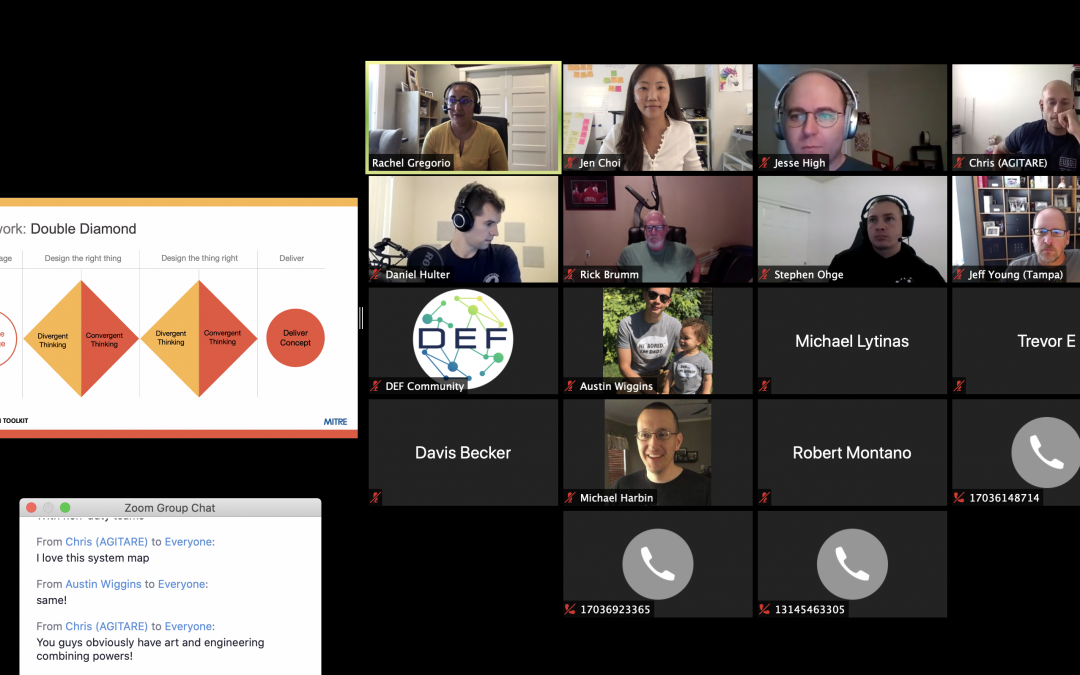
by rgregorio | Sep 21, 2020 | Misc Awesomeness, Team Toolkit
The Defense Entrepreneurs Forum (DEF)’s mission is to promote a culture of innovation in the national security community, and Project Agitare is a group of DEF Facilitators who are passionate about putting innovation, design, and discovery skills, tools & methods into the hands of individuals across the Defense community.
When their founder, Air Force Tech. Sgt. Daniel Hulter, invited Team Toolkit to present in a training workshop, it was a no brainer for Team Toolkit to connect with fellow co-conspirators for innovation! Jen Choi and Rachel Gregorio introduced two MITRE-unique tools, the Premortem and Culture Change Canvas, that every organization should keep in their back pocket. Check out the full recording here!
Project Agitare aims to further the vision to enable innovation in the Department of Defense, by introducing a type of social technology that they call facilitated discovery. If you’d like to learn more or get involved, check out Project Agitare’s page on the DEF site.
(PLAIN LANGUAGE DISCLAIMER: we’re providing the link so you can learn more about Agitare, but it’s not an official MITRE endorsement or anything like that)
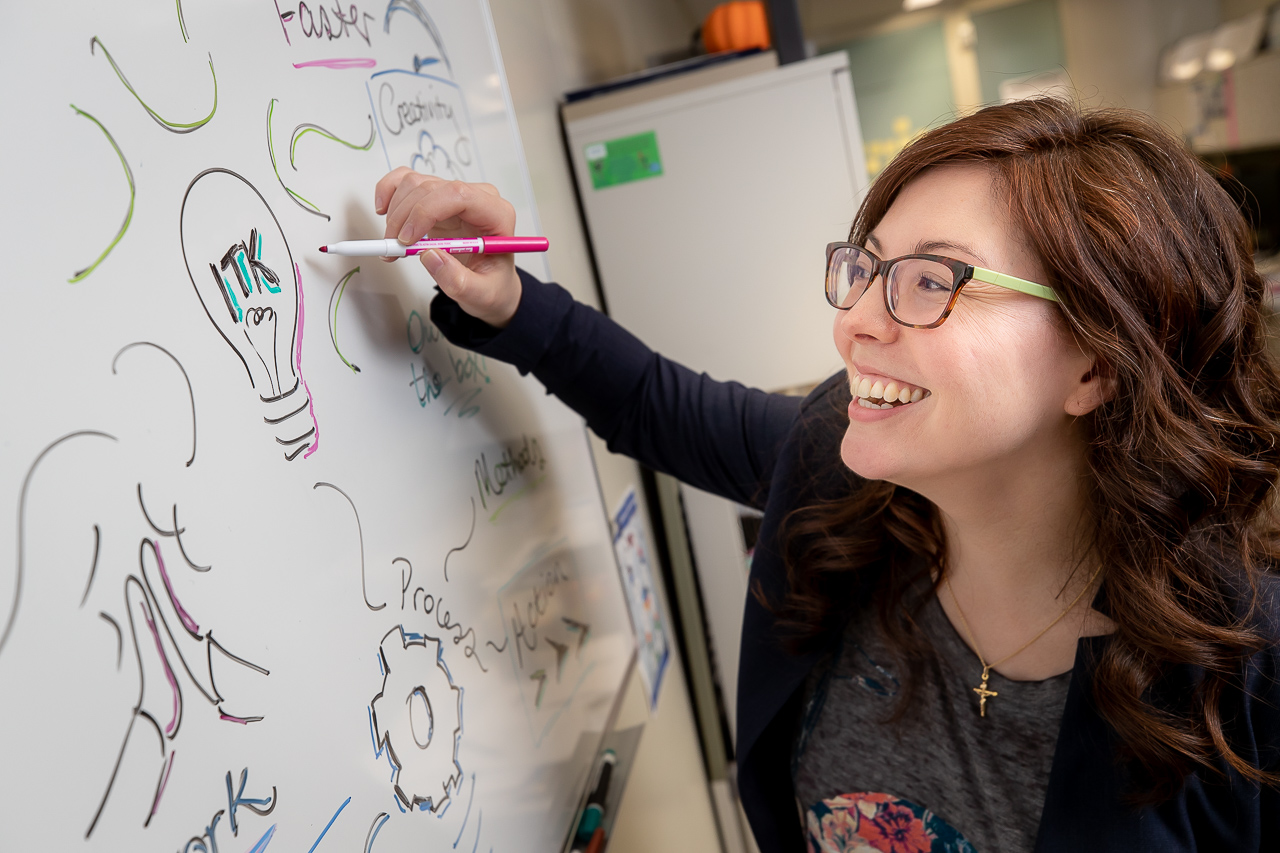
by rgregorio | Nov 4, 2019 | Interviews, Team Toolkit
Aileen Laughlin, Lead Systems Engineer, brings a long passion for technology, innovation, and user-centered design to Team Toolkit. Her enthusiasm and wild ideas bring an electric energy to the team, so I was looking forward to chatting with her about how she got here, where she finds inspiration, and what she sees for the future of ITK.
(Military) Family Matters
Moving around a lot as an “Army brat” and growing up on military bases fostered her interest in technology and all things military. In college, she was interested in product design and the human element of technology, leading her to human factors. She landed an internship with a major contractor and that was that! After a while, she became frustrated by her inability to help users or make progress on projects (see her article on why user-experience design is so tough). She joined MITRE where she could have more direct influence and impact. Working on ITK has allowed her return to her military routes and get the Toolkit in the hands of the warfighters to unleash their innovation!
Doing something different that makes a difference
Aileen is always trying to do more UX/UCD work since many don’t get that type of support. She believes that if more people understood design as a discipline, they would eliminate a big chunk of product and system problems. For the projects and programs Aileen supports, she feels rewarded to see people recognize the value and impact that comes from UX/UCD. She finds it most rewarding to help users be heard and get what they need for their jobs. With ITK, she helps people think and work differently, tapping into their inner innovator or inventor. Witnessing people in all their creative, curious, critical thinking glory collaborating with others to solve tough problems is a thing to behold.
Aileen loves to learn and is constantly sharing her findings with the team. She reads about what’s happening in the DoD (“These are exciting times!”) and technology, since it’s an interest of hers. On projects, she always want to know more about the context, landscape, or what’s new, sending her down the Google rabbit hole. Aside from Googling, she uses news aggregator apps, tagging topics of interest.
Tailoring toolkits
Admittedly obsessed with DIUx (now DIU) when former Secretary of Defense Ashton Carter announced the organization, Aileen was interested in getting MITRE involved. Understanding the user and understanding the problem is such a major part of any innovation venture. As she was looking across industry at innovative organizations that leverage the brain power of all their work force, she came across innovation toolkits.
A common theme in her research was the importance of tailoring toolkits for your group’s problems, organization, domain, and culture. Since MITRE and our sponsors are much more mission-driven, she was concerned terminology from a profit-driven company would reduce adoption and confuse users. Aileen reiterated the need to strike a balance between being respectful of people’s comfort zones while finding gentle ways to push them out of them.
Show, don’t tell
When asked about the best way to get people outside their comfort zones, Aileen recommended the “show, don’t tell” approach. She used bodystorming on one of her projects, where users brainstorm and work through a design using physical props. She explained in advance to her team that they’d move boxes around to find the ideal position for equipment. She could tell some people thought she was crazy when she arrived with labeled, duct-taped cardboard boxes matching the dimensions of different hardware. But once they packed into the truck and started moving the boxes around, people recognized the goodness. Find an instance where just doing things can make people believers.
Bodystorming is her favorite tool in the kit because it forces people to walk through something in its entirety. When people start to put an idea or concept through its paces, they can see where it starts to fall apart or maybe what might have been overlooked.
Challenging the status quo
Aileen’s innovation style? Nothing’s too wild + let’s just do it. With a “how can I make it better?” mentality, she has ideas coming and going all day. When she feels strongly about an idea, she want to execute right away before the fire is gone and something else catches her attention. She loves running her ideas by people – finding it eye-opening, informative and helpful to see things from another perspective. By the time an idea’s made its way through Team Toolkit, it’s evolved into something way more awesome.
She attributes culture change to finding the people in a group who are willing to question the status quo and ask questions. Aileen sees individuals as the catalyst for change and sees more people asking: “why do we keep working this way?” when there are better options. ITK methods can help you and your co-disruptors continue to ask some of those important questions. If you’re not sure how to start, Aileen recommends reaching out to someone on the team! Connecting with new, different people is oftentimes an undervalued part of innovation – so start with Team Toolkit.
Aileen’s dream for ITK is for people to feel empowered to use ITK on their own. That they adopt, adapt, and grow the toolkit for their needs and this creative, collaborative, critical thinking approach to problem solving becomes the new normal. Her vision for the future of ITK? Digging into the next set of really hard problems while eating 3D-printed failure cake on Mars.

by Niall White | Oct 28, 2019 | Interviews, Team Toolkit
 What do caricatures, public speaking, and user experience design all have in common? I was fortunate to answer this question when I interviewed Rachel Gregorio. She’s tailored her career around her talent as an artist and passion for user centered design. In addition to being incredibly talented at the aforementioned disciplines, Rachel is kindhearted and can be trusted to handle any difficult situation with grace and professionalism. AKA, she’s the type of person any team wants around!
What do caricatures, public speaking, and user experience design all have in common? I was fortunate to answer this question when I interviewed Rachel Gregorio. She’s tailored her career around her talent as an artist and passion for user centered design. In addition to being incredibly talented at the aforementioned disciplines, Rachel is kindhearted and can be trusted to handle any difficult situation with grace and professionalism. AKA, she’s the type of person any team wants around!
As a User Experience Designer at MITRE, Rachel is also a founding member of “Team Toolkit”, the group that curated a list of innovative tools for The MITRE Corporation [e.g., The Innovation Toolkit (ITK)].
Growing up in the “Disney Era”
Early on, Rachel recognized her love for art. As a young child, she started drawing her favorite Disney characters and was taking cartooning classes by age 7. For those of you wondering what is meant by “Disney Era”, all you have to do is ask anyone that remembers the releases (and classic sing-alongs) of The Little Mermaid, Aladdin, The Lion King, or Beauty and the Beast and you’ll get your answer. Rachel went from using the book How-to-Draw Mickey and Friends to starting her own caricature business when she was 11. By 16, she was drawing caricatures in Boston’s Fanueil Hall and conversing with strangers. She’s even illustrated a few children’s books! These communication skills and experiences being in front of an audience continue to help her today as she facilitates ITK workshops (more on this later!). Rachel promised to make a caricature of Team Toolkit if we can find our way into a major business or innovation magazine!
Making design part of your job
Pursuing an art degree seemed like a natural fit, but Rachel wasn’t sure this perfectly aligned with her career goals. Throughout her early career as an artist, she’d learned the importance of good communication. So, why not simply pursue two degrees? (um…because its hard?). And that is exactly what Rachel did, double majoring in Communications and Studio Art at the Boston College. Rachel started her career in marketing, as it seemed like a natural blend of her two majors. Not stopping there, Rachel went back to school for a master’s degree in Interactive Media. Some courses in UX design helped her discover an opportunity to combine her interests in design, communication, and business, and she decided that this is what she wanted to do.
Team Toolkit, enter stage left!
After starting at MITRE, Rachel found herself attending an innovation interest group organized by Dan Ward, a fellow Team Toolkit member. It wasn’t long before Rachel, Dan, and a few other soon-to-be ITK founders (Aileen Laughlin, Stephanie Medicke, and Jessica Yu) got connected with a Boston startup to provide some feedback on their products and user-centered best practices. They kept using repeatable methods, so they decided to make an Innovation Toolkit curated for MITRE. Thus, Team Toolkit was born. Rachel describes the ITK as methods that bring people together, allowing more affective meetings that enable them to achieve their goals, solving their problems together. Though the ITK is a significant part of Team Toolkit’s responsibilities, a significant amount of time is spent preparing for and facilitating “workshops”. Being front and center for what can be hours or even days is pretty normal. Rachel attributes some of her comfort in front of an audience to her involvement with Toastmasters, where she led the chapter at her first job. Not bad for someone that says they were a bit shy beforehand!
Have a Slice of Failure Cake?
When asked what some of her “best failures” have been, Rachel talked about the importance of experimenting with your career. She suggested finding roles and people that you like, searching for creativity, working it into your job, and constantly reflecting. Rachel noted that we put this to practice on Team Toolkit. We celebrate failure by learning from it. We’re lucky MITRE has been so supportive of our “intrapreneurship.”
The TEAM of Toolkit
If the reader takes anything from this article, Rachel wants it to be this: If you can find the right people that have the same passions and interests as you, you can make your job so much more than it is on paper. The challenge is finding those people; Team Toolkit is lucky to have done so.
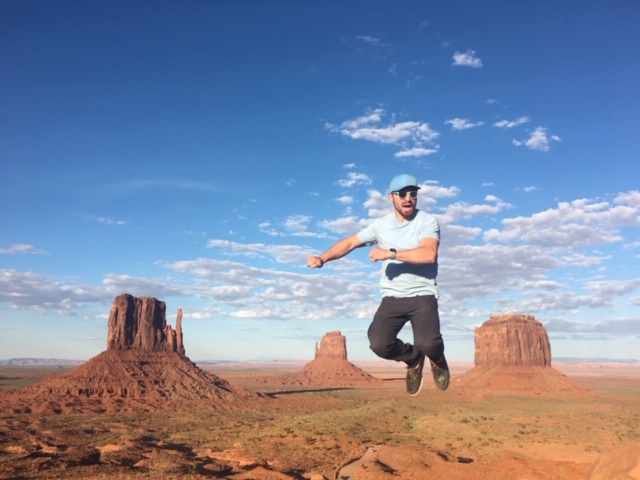
by dbward | Oct 14, 2019 | Interviews, Team Toolkit
Earlier this month I sat down with Niall White for an interview, the latest in our ongoing Meet Team Toolkit blog series. Well, I’m using the word “with” loosely, because I was in Massachusetts and he lives in Utah. We talked about music, art, cake, stinky cheese, and – of course – innovation. Niall is smart, analytical, funny, and a genuinely nice guy. Hope you enjoy the interview!
Dan: Let’s start with a get-to-know-you question: Say one word that describes you… and then say some more words about it.
Niall: One word is probably optimizer. I’m very analytical and like to be sure about things. So I’m always considering my options to make sure I’ve picked the best one. I love doing a lot of research but I also try to avoid overthinking things or spending too much time on research. Sometimes I succeed in that…
D: How did you end up at MITRE?
N: I first heard about MITRE from my dad when I was a kid. He was an Air Traffic Controller who worked with MITRE and always had good things to say about the people. Then in grad school, I interviewed with the company and got a great offer. Two years later, I’m still here!
D: What did you study in grad school?
N: I got an MS in Information Security Policy and Management, at Carnegie-Mellon, which is a fancy way of saying I studied cybersecurity. While I was there I also took a few courses in design thinking, and that’s a big part of how I got involved with the Innovation Toolkit.
D: Aside from working on ITK, what else do you do at MITRE?
N: I mostly support Public-Private Partnership and Acquisition projects, helping to translate technology into requirements and building strategies. But the ITK work overlaps a lot with my day job – it’s fun to pull design thinking and ITK into the cyber-type work, whether it’s cyber testing or program protection.
D: What’s it like to be part of Team Toolkit?
N: It’s great! We all have so many diverse skills and backgrounds, which is really cool. As someone whose primary expertise is in the cyber realm, I can definitely empathize with people who don’t automatically feel like they are part of the design thinking crowd, or maybe feel like these methods aren’t really for them. Because of my background, I can help show that ITK is really for everyone.
D: How might you explain ITK to someone who’s not really familiar with things like design thinking or innovation?
N: I’d say these are tools that help adults be kids again. They help us tap into a more creative mental mode. These tools change our speed, exercise a different part of our brain, and ultimately make us better problem solvers.
D: Do you have a favorite tool?
N: Yeah, I really like the Premortem. And Mind Mapping. And Problem Framing. So I guess I have three favorites, but they’re all sort of related. Too often teams jump right to a solution or end up being busy for the sake of being busy. These tools help make sure we know what the problem really is, and they give us permission to have really important conversations we might not otherwise have. Conversations like “What problem are we really trying to solve?”
D: One of the things Team Toolkit does is celebrate failure with cake. Do you have a favorite flavor of Failure Cake?
N: I like failure cake that tastes OK. All too often failure does not feel OK, so I’d love it if failure cake was an OK flavor. Maybe vanilla? And let me add that if Team Toolkit was a cake, it would definitely be my favorite kind of cake: Funfetti, with all the colors and flavors together. Confetti is my favorite thing.
D: I borrowed that last question from when your wife Kaylee interviewed me, and this next question is from her too. If ITK were on the cover of a major business / innovation magazine, what would you want the cover to look like?
N: I’d want it to be an art montage by Lane Smith. He’s the illustrator who did Stinky Cheese Man, and I really like his visual style. It would be so cool to see how he would represent Team Toolkit.
D: Final question – is there anything else you want to tell the world about ITK?
N: It’s such an amazing team, and I hope more people can find themselves on teams like this. Everyone deserves this at least once in their lives!
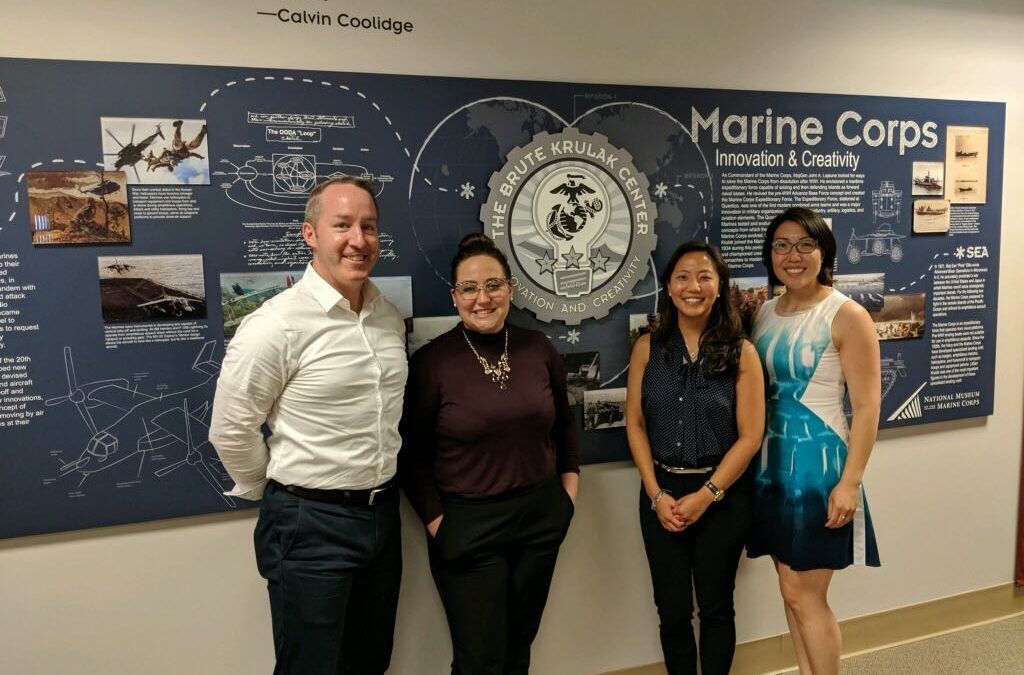
by choij | Sep 30, 2019 | Success Stories, Team Toolkit
Hot. Muggy. Humid. Like a swamp (but not really).
Yep, I’m talking about DC summers. The time when tourists and summer interns descend en masse upon the District, and the locals grumble about these visitors mistakenly standing on the left side of the metro escalators.
But now that the kids have gone back to school, the mornings have a brisk chill, and the green trees are starting to show their first yellow leaves, it’s time for us summer lovers to accept the inevitable: Fall is coming.
With any change in seasons, it’s a prime time to reflect on the past season to savor the good moments and make course corrects for the next one.
For me, my favorite ITK summer memory was by far our “ITK DC Roadshow” to bring our Innovation Workshop to the National Academy of Sciences, the National Academy of Public Administration, and the US Marine Corps Brute Krulak Center for Innovation and Creativity.
Based on their interest and unique requests, Team Toolkit developed a custom Innovation Workshop that took participants on a lightning round lesson on three ITK tools (Problem Framing, Value Proposition Canvas, and Culture Change Canvas). They learned how to use these tools and applied them for current problems with us there to guide them.
It was an absolute delight working with such engaged and dynamic participants: We were truly impressed by their eagerness, their hunger for innovation, and their willingness to try something different.
And we learned so much from them too! We found fellow comic makers and problem framing enthusiasts, and our own perspectives and world views were positively widened from our workshop conversations.
But the best part was the “Train the Trainer” portions of our workshop: Rather than being only a participant, we invited our audiences to also become co-conspirators of innovation by teaching them how to lead the use of these tools on their own teams without us.
Let’s let that soak in a bit… remember the saying about the man and the fish?
Give a man a fish, and you feed him for a day.
Teach a man to fish, and you feed him for a lifetime.
Yes, that one. By teaching our audiences how to use ITK tools, and the practices and mindsets behind them, we created the first of hopefully many future cohorts of co-conspirators.
We at Team Toolkit are passionate about democratizing innovation and believe that anyone and everyone can be an innovator. We created the ITK toolkit to provide tools and a structured process to help you get there faster because helping you ultimately helps all of us.
Have a question on the ITK tools? Want an ITK Innovation Workshop at your organization? Not sure where to start but know you want to?! Contact us! We’re here to help and can’t wait to connect with you.
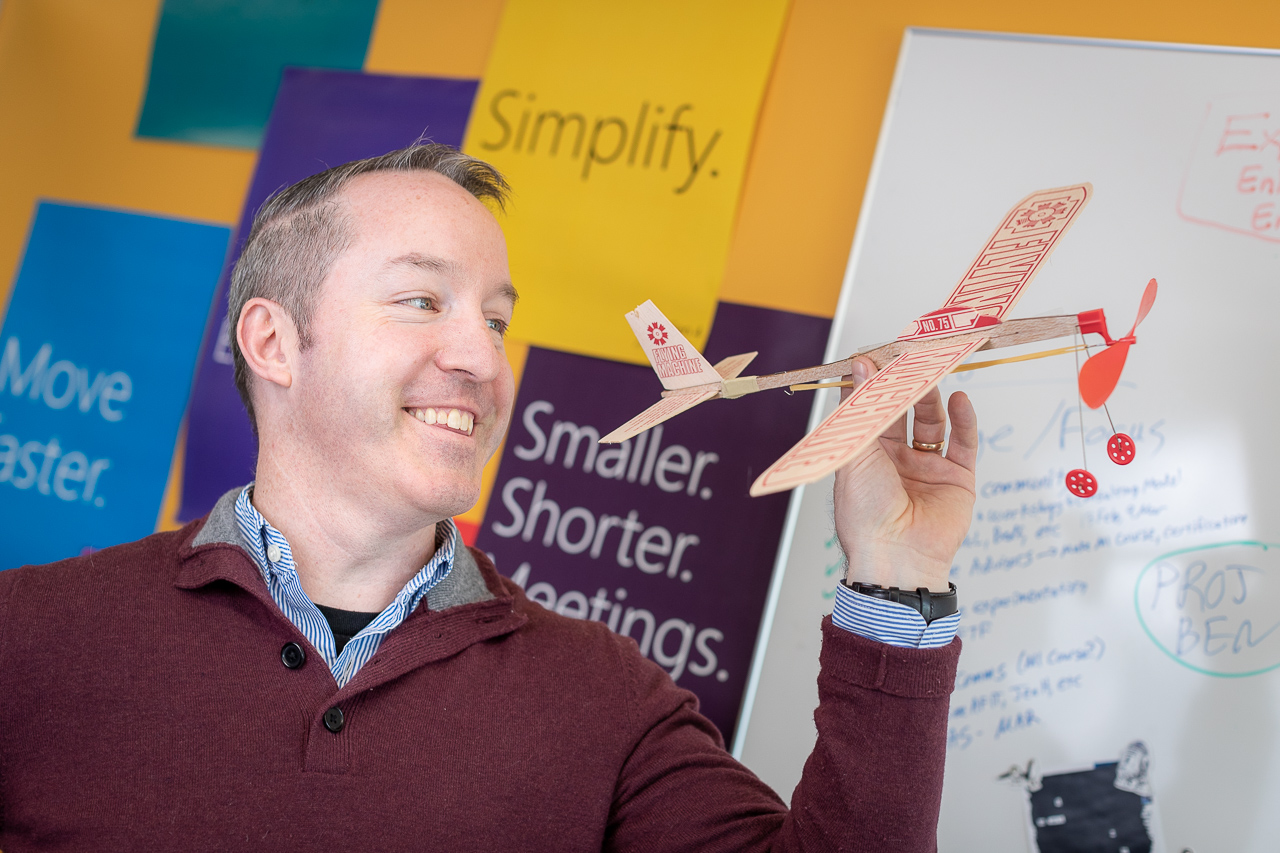
by kswhite | Sep 3, 2019 | Interviews, Team Toolkit
I had the pleasure of interviewing Dan Ward, an outstanding member of the Innovation Toolkit (ITK) team and MITRE Innovation Catalyst. (Yes, that is his actual title. Fitting, right?) Dan describes himself as a positive, energetic person and I think it is safe to say that anyone who meets him would agree. Dan brings oodles of fun, positive energy to every ITK function— enough to fill the room and even take home leftovers. We are pretty lucky to have him on the team!
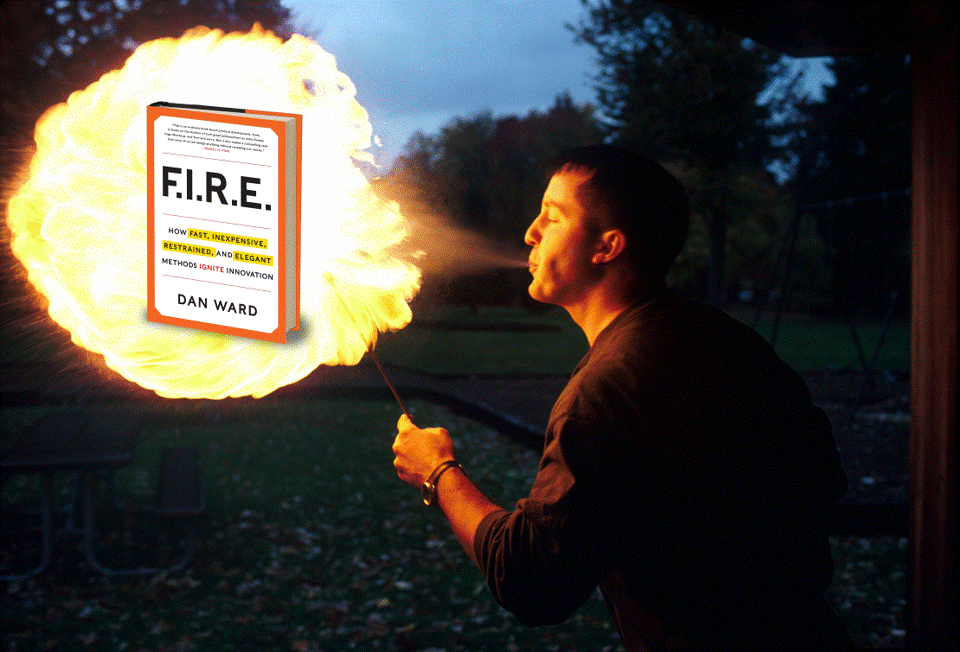 Dan has an impressive professional bio. He spent 20 years with the Air Force on active duty, retired, started an innovation consultancy, and came to MITRE to get the best of all those worlds. He’s an author, researcher, professional speaker, engineer— and let’s not forget, a fire eater! —you know, the people who stick flaming torches down their throats and blow giant fireballs from their mouths. (That tidbit doesn’t always make it to the professional bio.) He started doing magic shows when he was 10, then advanced to juggling, and then progressed fire eating. Naturally. (Yes, he likes spicy food. More about that later.) Now also seems to be a good time to put a plug in for his book: F.I.R.E: How Fast, Inexpensive, Restrained, and Elegant Methods Ignite Innovation. If you haven’t yet already, check it out. It’s one of his many claims to flame—uh, I mean fame.
Dan has an impressive professional bio. He spent 20 years with the Air Force on active duty, retired, started an innovation consultancy, and came to MITRE to get the best of all those worlds. He’s an author, researcher, professional speaker, engineer— and let’s not forget, a fire eater! —you know, the people who stick flaming torches down their throats and blow giant fireballs from their mouths. (That tidbit doesn’t always make it to the professional bio.) He started doing magic shows when he was 10, then advanced to juggling, and then progressed fire eating. Naturally. (Yes, he likes spicy food. More about that later.) Now also seems to be a good time to put a plug in for his book: F.I.R.E: How Fast, Inexpensive, Restrained, and Elegant Methods Ignite Innovation. If you haven’t yet already, check it out. It’s one of his many claims to flame—uh, I mean fame.
After retiring from the military, Dan enjoyed the freedoms that came with independent consulting, but missed being part of the long-term goals and objectives that come with working on a larger team. A longtime friend who worked for MITRE and is also named Dan Ward (What are the chances?), invited our Dan Ward to apply for a new innovation and experimentation job opening at the company. Dan gave it a whirl and was struck by MITRE’s hiring practices. At his job interview, he found that MITRE wasn’t trying to fit him to a specific role, but rather change the role to fit him and his strengths and interests, making for an overwhelmingly positive experience that ended in an offer he couldn’t refuse.
At MITRE, Dan’s day job is working on defense acquisition policy. The Pentagon recently rolled out a middle-tier pathway of acquisition to speed up the process and reduce management overhead and oversight. Dan helps shape and craft that policy. He trains program offices and MITRE folks on what it means, how to use it, and how to implement acquisition authority. This work mainly consists of training, writing, consulting, and research.
Dan’s passion project at MITRE is ITK. When asked to describe the ITK team he said, “A lot of what this team does is help groups work together on difficult technical and organizational challenges. We help with planning, communication, problem-solving and decision making. That’s what a lot of these tools come down to, helping human beings talk to each other in productive ways and solve problems as quickly and effectively as we can.”
Dan’s role on the ITK team includes helping develop tools, facilitate innovation sessions, help MITRE teams understand what innovation is and how to use the tools, use the tools with them, and train people on how to use the tools on their own. As he explains, one of the ITK team’s core goals is to democratize innovation and make sure people understand innovation, know how to do it, and have access to the necessary tools.
The ITK team is unique in that it has a shared leadership structure. It is egalitarian. Dan pointed out, “I’m often described as the leader just because I am the oldest, but I try to correct that perception whenever it comes up.”
The ITK team is also bound by strong ties of friendship. Throughout the interview, Dan often returned to how he values the team. When asked what the cover should look like if ITK were featured on a major magazine, Dan said, “I hope it would have a picture of all of our faces. As cool as the toolkit is, the most important thing we have built is the team.” When asked what the worst-case failure scenario looked like for ITK, Dan said, “A future where we aren’t even friends anymore. That feels like the most dystopian scenario. Or there is another failure where people point to ITK as the main reason for the failure. Of those two, not being friends anymore would be the worst.”
The ITK team has a tradition of celebrating failure with failure cake(which we’ve blogged about previously). Since learning from failure is an important part of innovation culture, and we have had several occasions to literally eat failure cake, I asked Dan what his favorite failure cake flavor is. Next to chocolate, he said, “I like failure cake that tastes like learning.” When pressed for a flavor that most closely resembles the taste of learning, Dan replied with, “Tabasco. Hot and spicy with a little bit of pain but in a good way, and I kinda love it.” (Note to team: find a recipe for Tabasco cake.)
All in all, the one message that Dan hopes people really take away from ITK is, “You can do this. These tools are accessible. They are playful. They are usable. Innovation doesn’t need to be intimidating. It doesn’t need to cost so much or take so long. We can all do something that makes a difference. And I think we all have an obligation to be innovators—question the status quo, question our assumptions, and work well with the people we work with.”




 What do caricatures, public speaking, and user experience design all have in common? I was fortunate to answer this question when I interviewed Rachel Gregorio. She’s tailored her career around her talent as an artist and passion for user centered design. In addition to being incredibly talented at the aforementioned disciplines, Rachel is kindhearted and can be trusted to handle any difficult situation with grace and professionalism. AKA, she’s the type of person any team wants around!
What do caricatures, public speaking, and user experience design all have in common? I was fortunate to answer this question when I interviewed Rachel Gregorio. She’s tailored her career around her talent as an artist and passion for user centered design. In addition to being incredibly talented at the aforementioned disciplines, Rachel is kindhearted and can be trusted to handle any difficult situation with grace and professionalism. AKA, she’s the type of person any team wants around!



